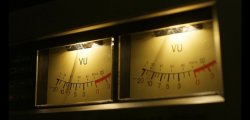1998 - 2002
My third Home Theater marked a time of transition. Transition to NEW speakers, NEW technologies, and better-quality components.
New BOSE Speakers
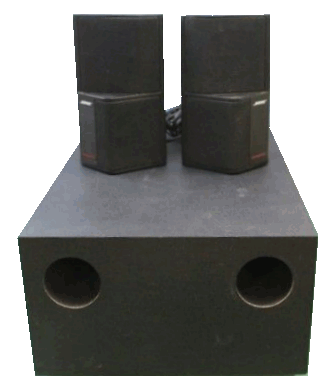
Bose Acoustimass 3
In an effort to reduce the footprint of my stereo in our living room, my wife bought me a set of Bose Acoustimass 3 speakers. The Acoustimass 3 system came as a three-speaker set. It features a vented port mid-bass and two higly dirctional The passive xxx . Because bass is non-directional (that is, you can't really tell where it's coming from), the Acoustimass system put a mid-bass unit in a box that could be tucked away in a corner or behind a sofa. The system also included two dipole (two-direction) satellites that would reproduce the high frequencies to establish the stereo positioning. The Acoustimass system was Dr. Bose's way of producing room-filling sound with hidden hardware.
However, I wasn't happy with the Bose. In my opinion, the system works as intended, but because the of the power draw of the mid-bass unit, the Bose does not reproduce as clear or as loud of a sound as other speaker systems.
Polk Audio
In a compromise, I said I would sell the large Kenwood KL-888x speakers. For Father's Day, my wife bought me a pair of Polk Audio R40 towers, and I sold the KL-888x's on eBay.
I was favorably impressed with the Polk Audio towers and eventually rounded out my speaker system with a Polk Audio CS-245i center channel speaker and a Polk Audio PSW-250 8" front-firing subwoofer.
My first outdoor speakers were Polk Audio. At the time, we lived in Florida and had a covered patio next to the pool. I crawled into the attic and cut holes in the ceiling above the patio to install two weather-resistant full-range speakers. They were a big hit making their debut playin patriotic music for a 4th of July pool party.

Polk Audio CS245i

Polk Audio PSW250
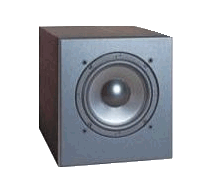
Polk Audio PSW250
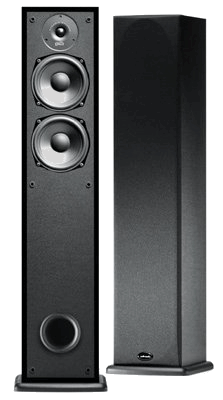
Polk Audio r40 towers

New Technologies
In the late 1980's, Digital Signal Processing (DSP) or "Surround Sound" was the latest innovation in audio technology. Receivers used four speakers (two front-two rear) or five speakers, (three front [left-center-right] and two rear) to achieve an engulfing sound, The earliest surround sound processing was simple reverberation and time delay added to the two rear channels. Different profiles went by the names such as "stadium", "hall", and "theater".
Digital signal Processing was followed by Dolby Lab's "Pro-Logic", a signal encoding and decoding technology that required five speakers: two front, two rears, and one in the front center. Pro-Logic combined waveforms that were similar in the front left and right, and sent them as a monaural signal to the front center. Waveforms that were unique in the front left and right remained routed to the front sides, providing stereo separation. The rears received a signal with reverberation and time-delay added to provide a "fullness" of sound.
New Receivers
Eventually, one channel went out on my Kenwood KR-3090 receiver. Since digital surround was the newest thing, I bought a new DSP receiver to replace it. My first purchase was a JVC with Surround Sound. I connected it with my new Polk R40s in the front and the Bose Acoustimass 3 in the rear. The sound was disappointing. Although it was rated at 100 watts-per-channel, I don't believe the rears received that much. Even at full volume, the rear channels were barely audible compared to the fronts. I think the small BOSE speakers with the passive mid-bass drew a lot of power that the JVC just could not deliver.

JVC Surround Sound Receiver

Kenwood Surround VR-407
The sound quality was so disappointing, I quit listening to music during thr mid-90's. (Mid-'90s music wasn't that great either). Eventually, I bought another receiver. Since I had been happy with my previous Kenwood, I bought another Kenwood, the VR-407. T this one was rated at 100 watts-per-channel, all five channels. I connected the Kenwood KL-888x speakers to the front and the BOSE acoustimass 3 as rear speakers. Performance was adequate, but not remarkable. Neither receiver gave a satisfying sound.
My Introduction to High-Current Amps
One of my co-workers had a home system he was upgrading. He begged me to come and hear it. After putting him off for several months, I ran out of excuses. So I grabbed a couple of my favorite CDs and went over for a test ride. One reason he wanted me to come over so badly was he wanted to sell me his old equipment. He had a new Onkyo receiver, and five huge Definitive Technology tower speakers. Both his front towers had a subwoofer built in. I was amazed.

He explained to me the difference in " normal" and high-current amplifiers. His sinister plan worked. I bought from him his non-working Harman / Kardon AVR-60 receiver and his two Definitive Technologys BP6 bi-pole towers. I had the Harman / Kardon repaired for $40.

Harman/ Kardon AVR-60
The Harman / Kardon AVR-60 that I bought from my co-worker was only rated at 60 watts-per-channel. As he explained the benefit of a high current amp, he tried to convince me, that even with a modest 60 watts-per-channel rating, the Harman / Kardon would out-perform my 100 watt-per-channel Kenwood.
Being an engineer type, I decided to test it for myself.
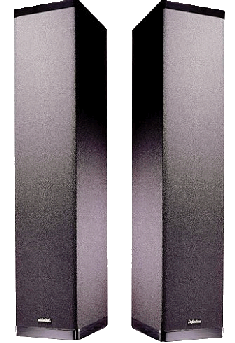
Definitive Technologys BP6s
The Big TEST
I set the Harman / Kardon and the Kenwood side-by-side. I connected one channel of my Kenwood receiver to one of my new Definitive Technologys BP6 towers, and one channel of the Harman / Kardon to the other. I connected one channel output of my Sony DVD player to the Kenwood, the other to the Harman /Kardon.
At first, the sound difference was indiscernible between the two receivers. But as I turned the volume up to near 80% on the Kenwood, I noticed distinct clipping in the upper frequencies. The Harman / Kardon was still feeding a clear signal. At about 85%, the Kenwood would cut out temporarily, then come back on. The Harman / Kardon didn't falter. As I approached 90% volume on the Kenwood, it shut down completely, requiring me to cycle the power off and back on. The Harman / Kardon pressed on, still delivering clear sound, even though I perceived it to be louder than the Kenwood just before it shut down.
That test convinced me that high-current was the way to go. I found a website called Audiogon where audophiles re-sell their "higher class" components. There I found a Parasound HCA-1205A 5-channel high-current amplifier rated at 125 watts-per-channel (4Ω).
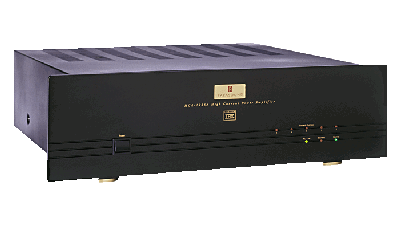
Parasound HCA-1205A front view
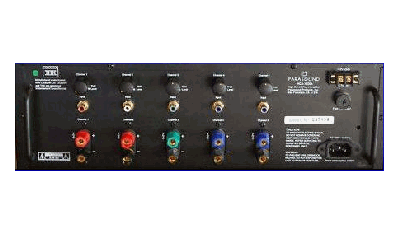
Parasound HCA-1205A rear view
